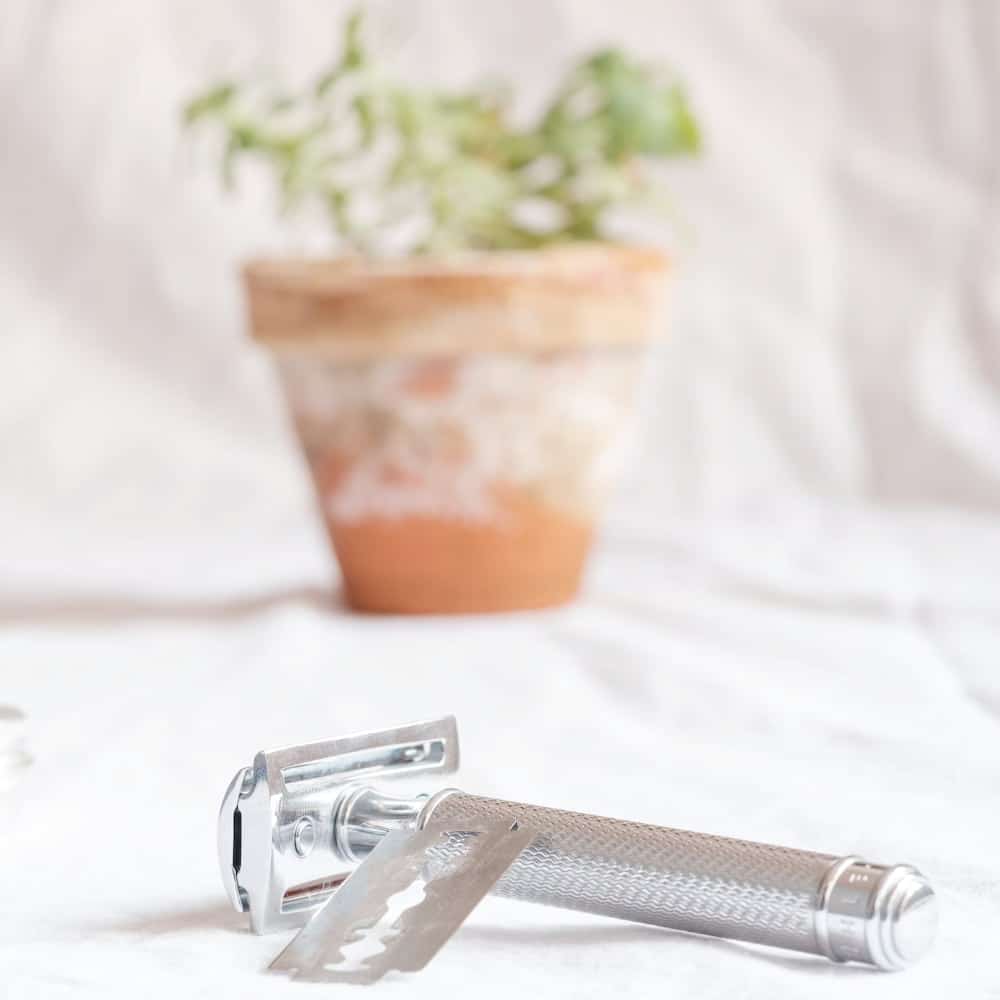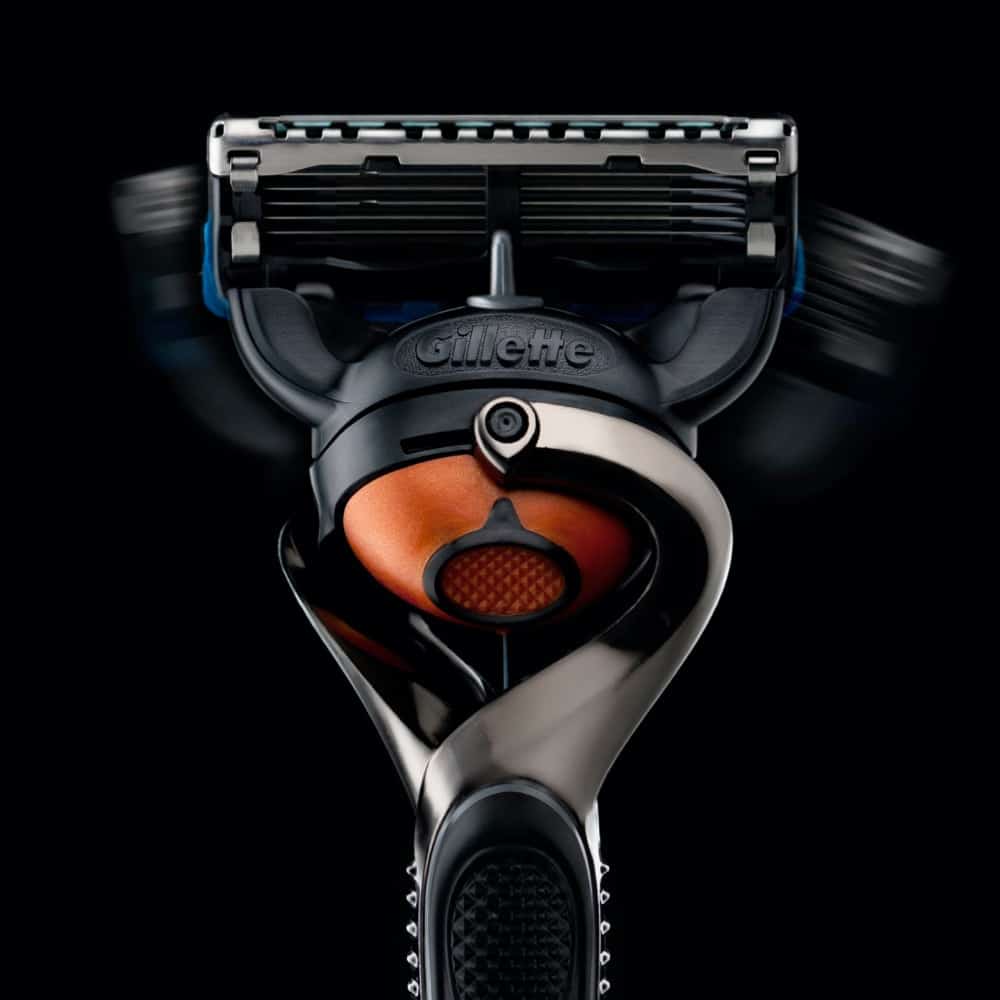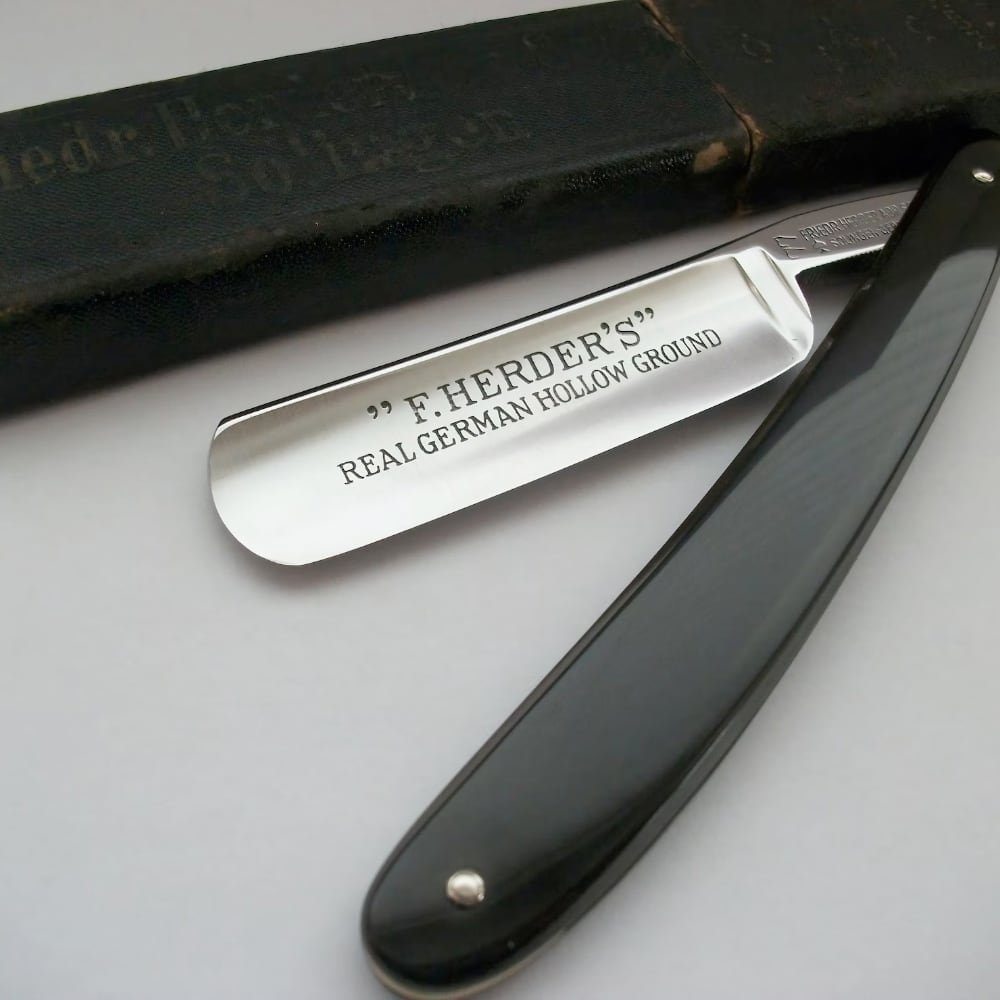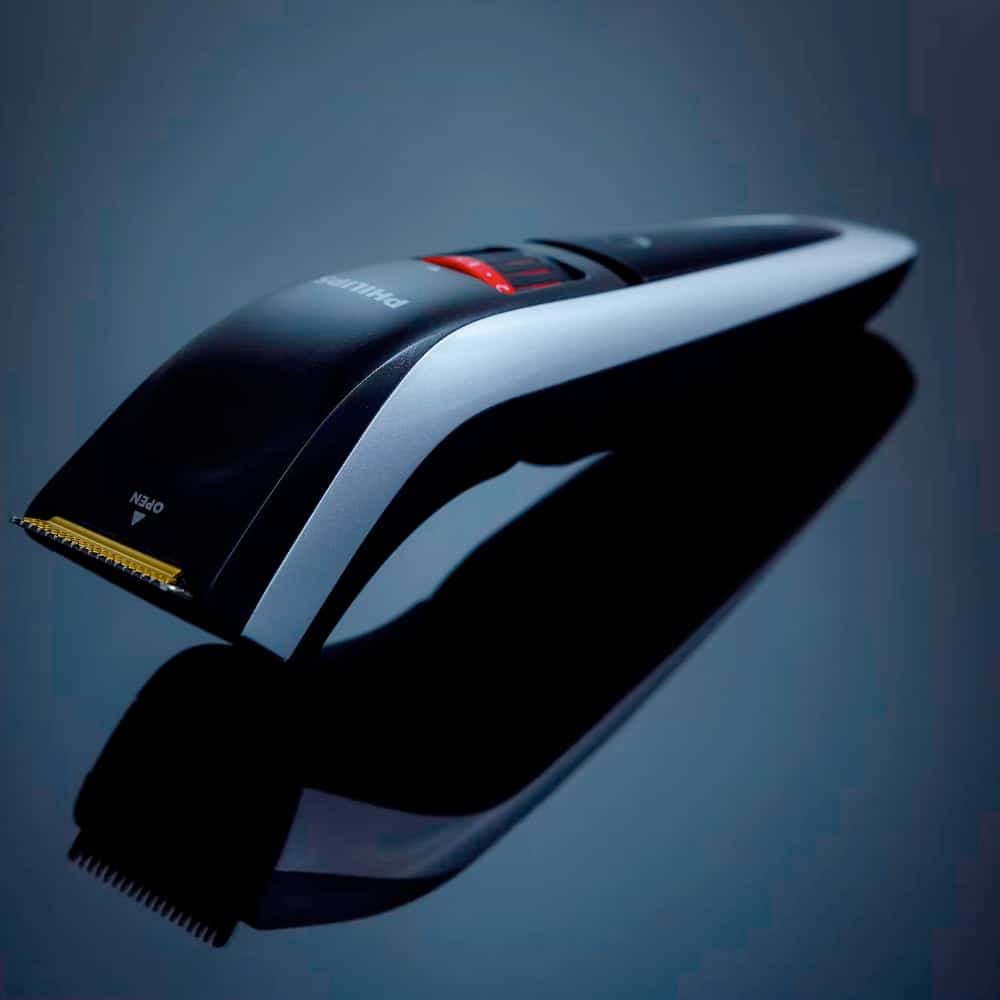When researching razors, you’ll find five main types: safety razors, cartridge razors, straight razors, electric razors, and disposable razors.
As you might guess, each of these razors provides drastically different shave experiences from one another and have differing price points and skill levels required to use them. This guide is intended to only be a jumping-off point for your research.
Let’s take a look at each of these razor types and their pros and cons.
| Razor Type | Pros | Cons |
|---|---|---|
| Safety Razor | Longer blade life Quicker shave Less expensive Reduced irritation | Learning curve Higher up-front costs Not travel-friendly |
| Cartridge Razor | Ease of use Closer shave Travel friendly | More expensive blades Susceptible to causing bumps Dry skin & irritation |
| Straight Razor | Long-lasting blades Therapeutic Cost effective | Steepest learning curve Slowest shave |
| Electric Razor | No shave cream needed Travel-friendly Low maintenance | Not as close Costs vary on model |
| Disposable Razor | Easy to use Low-cost | Environmental impact Not as comfortable |
| Beard Trimmer | Vast range of lengths No nicks or cuts | Cannot provide close results |
Safety Razor

Invented in the early 1900s, the safety razor was a groundbreaking invention at the time. A modification on the traditional straight razor, the safety razor introduced a safety bar that helped to flatten the skin and reduce the risk of nicks and cuts. Not only did it offer more safety over the straight razor, but it also offered convenience and speed.
- Longer Blade Life than its Predecessor: Safety razors included a blade on either side of the head that extended the life of the blade 2x what a single-blade straight razor could offer.
- Quicker Shave: The safety bar helped folks to shave more efficiently and quickly than ever before.
- Less Expensive: While still relatively niche within the entire shaving industry, safety razors have seen a resurgence due to their low lifetime costs. For example, a pack of 100 blades can be purchased for as little as $10, or about $0.10 per blade. Compare that to a cartridge razor, which can cost as much as $2 per blade.
- Reduced Irritation: With a single blade, the safety razor is less likely to cause razor bumps as the hair follicle is never cut beneath the skin’s surface. Folks with exceptionally curly hair will find safety razors prevent this issue.
Of course, safety razors do have some drawbacks, the most notable being the following:
- Learning Curve: If you are familiar with cartridge razors, you’ll find that safety razors are a bit more difficult to use. They must be held at an optimal cutting angle and have very little pressure applied to the skin. As you learn this shaving tool, you’ll likely experience a few nicks and cuts.
- Higher Up-Front Costs: While the cost of blades is lower, the handle of a safety razor is more expensive. A well-made safety razor typically retails between $50 and $100.
- Not Travel-Friendly: Safety razor blades are not TSA-compliant. They must be in your checked luggage or purchased at your destination.
Cartridge Razor

Introduced in the 1970s, the cartridge razors took a lot of what was good about safety razors and modified them for convenience and profit. With multiple razor blades set at the optimal cutting angle, a cartridge razor can provide an even closer and safer shave than a safety razor.
- Ease of Use: Cartridge razors are extremely easy to learn – making them good for folks learning to shave. Simply hold the razor flat against the skin and glide over the surface, and you are good to go.
- Closer Shave: Thanks to the hysteresis phenomenon, cartridge razors can lift-and-cut the hair follicle to provide smooth results.
- Travel Friendly: Cartridge razors can be brought with you wherever you go. And if you forgot it at home, thanks to the mass popularity of cartridge razors, it’s not too difficult to find a replacement.
Of course, there are some obvious and not-so-obvious drawbacks to using a cartridge razor:
- More Expensive Blades: This is the biggest gripe among consumers. While the initial investment for a cartridge razor is cheaper than a safety razor, the blades are more costly. A pack of 8 blades can range from $15-$30, depending on the brand.
- Susceptible to Causing Bumps: Folks with especially curly hair are more likely to experience razor bumps when using a cartridge razor. However, some brands have recently introduced modifications on the cartridge razor, like the Gillette SkinGuard, that set blades further apart to reduce this issue.
- Dry Skin & Irritation: With each pass, a cartridge razor can put stress on the skin’s moisture barrier. This can cause dry and irritated skin, especially if using dull blades or poor shaving cream.
Straight Razor

A classic among options, the straight razor is the most traditional of all razor types. Used as far back as the early last 1600s, this type of razor is for those folks who want to rediscover the lost art of wet shaving. While it is the most difficult to use, it is also the most rewarding.
- Long-Lasting Blades: With proper care, a straight razor can last a lifetime. However, know that you’ll need to strop it regularly and either hone it yourself or send it to a professional to keep it in tip-top shape.
- Therapeutic: Whether you are retired or just want to have a fun weekend hobby, the straight razor offers a unique experience that can be quite soothing and cathartic.
- Cost Effective: Though the initial investment may be high, as a good straight razor can easily cost upwards of $200, the long-term costs are relatively low.
Of course, straight razors do have some drawbacks that you should consider:
- Steepest Learning Curve: Without a doubt, the straight razor is the most difficult to learn. Not only do you need to understand the proper way to hold it, but you also need to know how to maintain it by stropping and honing.
- Slowest Shave: If speed is your main priority, the straight razor may be a bit too time-consuming.
Note: Shavettes are a modification of the straight razor. They feature swappable blades and are often used by barbers.
Electric Razor

Invented in 1930 by Colonel Jacob Schick, the electric razor brought about a new kind of convenience for those who wanted a quick shave with minimal effort. Not intended to replace cartridges or safety razors but rather to act as a supplementary shaving tool that can get close to smooth results in a fraction of the time.
- No Shave Cream Needed: Electric razors do not require shave cream. In fact, they tend to work better without the induction of moisture.
- Travel-Friendly: Electric razors are approved by the TSA, making them the perfect tool to bring with you when you are short on packing space.
- Low Maintenance: Clean this shaving tool is easy; either empty it out over a trash can or rinse it under water. Replacement heads are often recommended every six months for optimal performance.
On the downside, electric razors have the following drawbacks:
- Not as Close: While an electric razor can provide smooth results, they are not as close as a safety or cartridge razor.
- Costs Vary on Model: As with other shaving tools, electric razors are very much ‘you get what you pay for .’Low-end electric razors can cost as little as $30, while high-end models can cost well over $300. As such higher-end models feature a better motor resulting in a better shave.
Disposable Razor

This razor is very comparable to the cartridge razor. However, where it differs is that the blade is fused with the handle and must be thrown away when the blades become dull. This is ideal for temporary situations, including travel, medical use, or while at the gym.
- Easy to Use: Like a cartridge razor, they operate in the same manner. Lather up some shaving cream on your face, press slightly, and make the appropriate passes.
- Low-Cost: Disposable razors are very inexpensive. A pack of 5 can typically be purchased for around $5.
A lot of folks don’t like disposable razors because of the following reasons:
- Environmental Impact: Once the blade becomes dull, you must throw out the entire handle. This is a lot of unnecessary waste that adds plastic to landfills.
- Not as Comfortable: The blades feel much duller than those found in other razor types. This often results in more passes which can lead to irritation.
Beard Trimmers
Finally, there is the beard trimmer. While not technically a razor, it can be included in the conversation as it is used to effectively and evenly trim facial hair of all lengths.
- Vast Range of Lengths: Beard trimmers have adjustable combs that allow you to select the exact length of your trim. This range can be from 0.5mm to 15mm.
- No Nicks or Cuts: Just like electric razors, beard trimmers do not put you at risk of cutting yourself. Plus, there is never a chance of other ailments like razor burn or ingrown hairs.
One of the most notable downsides in the context of this guide is that beard trimmers cannot provide close results. At best, they provide thick stubble.
Hybrid Razors
Within the last few years, a few companies have introduced razors that can’t necessarily be classified as one of the above.
For example, we have seen companies like OneBlade introduce a razor that carries many of the benefits of the safety razor in a form factor similar to that of a cartridge razor. Additionally, we also have seen the Leaf Razor that holds several safety razor blades in a cartridge-like form factor.
Gender-Specific Razors
By and large, a razor is a razor that is used to remove hair from the skin’s surface. Any of the razors mentioned in this article can be used by both men and women.
Worth noting, though, is that there may be some small design differences.
For example, women’s razors may have a larger conditioning strips for general body grooming whereas men’s razors are narrower for navigating tight contours when shaving facial hair.
I rather doubt that the straight razor is slowest because it has a broader path than cartridge razors. The shave may be less close than multi-blade cartridges. I’ve heard from another straight razor user that other razors gave him razor pimples. You’d usually not shave daily, and a really big advantage is that it doesn’t clog up regardless of how much growth you deal with. It will deal with a two-day beard as well as with a two-week beard.
You shouldn’t start practising during a time you need to be representable.